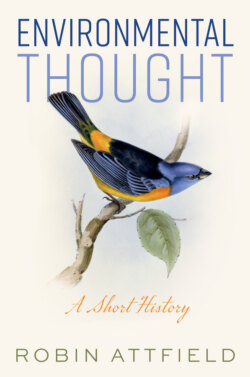Читать книгу Environmental Thought - Robin Attfield - Страница 22
Lynn White and medieval technology
ОглавлениеWhite’s understanding of the attitude of Christianity to nature (as anthropocentric and despotic) has already been encountered (see above, ‘The New Testament and the Christian message’). But his main specialism concerned medieval technology, and he wrote illuminatingly about wind-power and late medieval clocks and organs (White 1962). In this work he also discussed the introduction of heavy ploughing in Christian seventh-century Europe (use of ploughs equipped with a vertical knife to cut the soil, a ploughshare to slice it and a mouldboard to turn it over). But he always did so with qualifications and nuances, recognizing that such ploughing had occasionally been used much earlier (in Roman times) and was introduced to Britain and Normandy much later by the pagan Vikings (White 1962: 51; Attfield 2009b). But in his famous 1967 essay in Science, the nuances are omitted, and heavy ploughing, together with its implications for land tenure, is claimed as epitomizing the supposed new despotic Christian attitude of mastery over nature. ‘Formerly man had been part of nature; now he was the exploiter of nature.’ These claims appear to be upheld by White’s (controversial) despotic account of Christian theology.
While this form of ploughing was much more effective than the scratchploughing that preceded it, its introduction was not confined to Christian cultures; nor was it universal among them. Besides, the suggestion that humanity had, until that century, been ‘part of nature’ conflicts with the vigorous forms of agriculture promulgated long before by Hesiod, Virgil and Roman prose writers such as Columella (first century CE), and the suggestion that fear of nature and belief in spirits animating it had disappeared conflicts with the attitudes assumed in, for example, Beowulf (probably composed in the eighth century) (Coates 1998: 58). Nor does White’s ascription of a despotic view fit the attitudes of Basil, Benedict or their followers. In any case, his basing of this change of West European attitudes on a single technological development ascribed to the seventh century strikes many (including Coates) as disproportionate and ‘idiosyncratic’ (Coates 1998: 62).
White seems correct in ascribing growing technological superiority to Western Europe across the Middle Ages, and finding some of the roots of current ecological problems in its subsequent impacts. But since those roots more cogently turn on the industrial revolution of over a millennium later than the period to which he traces their origins, his case, even if it were better supported by early medieval technology, would require many additional explanatory factors to bridge this thousand-year chasm. Others have indeed detected an industrial revolution in the thirteenth century, citing the fulling-mill and the windmill (Carus-Wilson 1954; Coates 1998: 63), but without associating these developments with such wide-ranging changes of human self-understanding as those alleged by White. Besides, as Coates proceeds to show, this period also saw the beginnings of an increasing appreciation of nature and ‘the greenwood’ (Hutchinson 1974; Coates 1998: 64), rather than a monolithic posture of human mastery. White’s depiction of medieval attitudes as dependent ultimately on his account of theological beliefs in any case gives undue prominence to a single kind of underlying cause (ideas and beliefs), disregarding many other factors, among which are social, economic and cultural trends.
